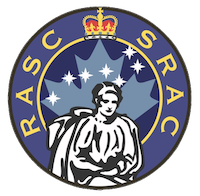Anne Barbara Underhill was one of the pioneers of studies of early-type stars during the 1950s and remained a major figure in this field throughout her lifetime. To all those who knew and interacted with her, an abiding memory must be the vigorous way she pressed her views at international conferences. Although diminutive, and often standing alone in her opinions, she was fully capable of making her voice heard. The proceedings of many IAU Symposia, Colloquia and other meetings, faithfully recorded, are full of her many verbal battles: in the early days often with Dick Thomas on the validity or otherwise of nLTE explanations for spectral line formation in OB stellar atmospheres; later with Lindsey Smith on the evolutionary status of Wolf-Rayet stars; and somewhat later still with myself and others on the question of the chemical composition of Wolf-Rayet stars. Halcyon days!
Anne Underhill was born on 12 June 1920 in Vancouver, Canada, where her father Frederick had been one of the earliest European immigrants. She obtained a BA (1942) and MA (1944) at the University of British Columbia, and her PhD at the University of Chicago (1948), with her thesis supervisor being S Chandrasekhar. Anne held a NRC Postdoctoral Fellowship at Copenhagen Observatory from 1948–49, and then joined the Dominion Astrophysical Observatory as a research scientist, where she stayed until 1962.
With Otto Struvé as her early mentor, she undertook detailed observations and interpretation of the optical spectra of OB stars, especially using coudé photographic spectra secured with the 72-inch telescope in Victoria. She built up an extensive library of very high quality, high-resolution optical spectra of OB stars, and these data needed model atmospheres for their interpretation. These did not then exist, so Anne set about rectifying this omission. She produced some of the first meaningful radiative transfer codes, albeit in LTE because the age of electronic computers had not yet dawned. Her models, involving numerical integration of the radiative transfer equations, had to be calculated using hand-worked mechanical machines – the (in)famous Brunsvigas – a real tour de force. The sheer effort and time involved in the production of these models was enormous, and I suspect her later reticence to accept the need for nLTE reflected that effort. Subsequently she became an avid nLTE advocate, and in her later years invoked the need for magnetic fields to be included in the state-of-the-art nLTE and hydrodynamical models for OB and WR stars being produced in the 1980s and 1990s.
In 1962 Anne became Professor of Stellar Astrophysics at the University of Utrecht, Netherlands, where she stayed until 1970. During this period she continued her studies of the optical spectra of OB stars and acted as the thesis advisor for several students, most notably Mart de Groot, who later became director of the Armagh Observatory. Others, like Henny Lamers and Karel van der Hucht, gained some of their first training under Anne's watchful eye. She taught undergraduate programmes at Utrecht in Dutch, having learnt the language. She joined the Anglican Church in Utrecht and was a member of the choir. Anne often reacted with high emotion to opinions she considered to be wrong, but her students and colleagues always admired her great astronomical insight and achievements, and quickly accepted her temperament. During her stay at Utrecht, Anne wrote her well-known book The Early Type Stars, published by Reidel in 1966. This quickly became a benchmark volume for all involved in the field, and it inspired many subsequent astronomers to enter the field of OB and WR research, including myself.
In 1970 Anne accepted a prestigious position at the NASA Goddard Space Flight Center as head of the new Laboratory for Optical Astronomy. For a short time she was the US Project Scientist on the joint NASA–UK–ESA International Ultraviolet Explorer satellite project, but did not fit well in that role and was replaced by Al Boggess. She returned to what she knew best – securing and interpreting optical and UV spectra of early-type stars – remaining at Goddard as a senior scientist until her retirement in 1985. She then returned to her beloved Canada, as an emeritus professor at UBC, Vancouver, and continued her astrophysics programmes and conference participation with great gusto.
Never one to spurn controversy, for the last three decades of her life Anne argued that the Wolf-Rayet stars are young, recently formed stars with normal chemical abundances. This is in stark contrast to the widely accepted view that they are the evolved descendents of the most massive O-type stars, revealing nuclear processed material. Most scientists reject her opinions in this area, but nevertheless some of her related ideas, concerning the need for consideration of magnetic fields and co-rotating structures in OB and WR stellar winds, have gained wider acceptance.
Anne Underhill will be remembered as an exceptional astrophysicist, a dedicated observational spectroscopist, and a major figure in early-type star research. Although where physics was concerned she always defended her views with great vigour and conviction, outside that sphere she was rather shy, though always willing to give encouragement and time to others. She received DSc degrees from the universities of York (1969) and British Columbia (1992), and was a long-standing Fellow of the Royal Society of Canada. Anne was elected a Fellow of the RAS in 1948. She died on 5 July 2003 in Vancouver, the place she hailed from and always loved. She will be sadly missed, and in many ways her passing represents the end of an era.
Allan J Willis
Astronomy & Geophysics 44 (6) 6.35 Royal Astronomical Society, Oxford University Press
Dr. Underhill was elected an honorary member of the Royal Astronomical Society of Canada on 1996-03-23.

